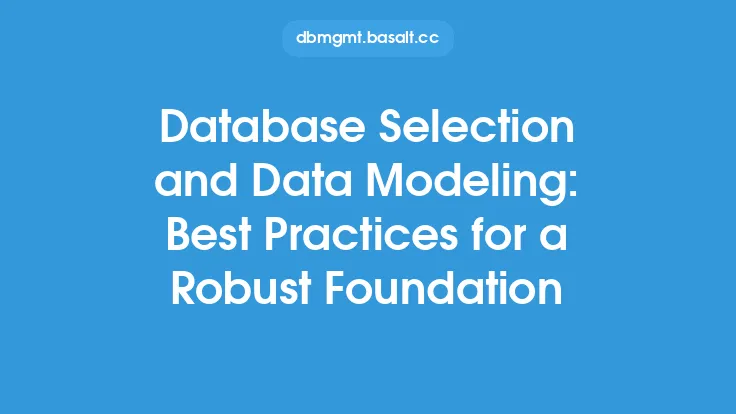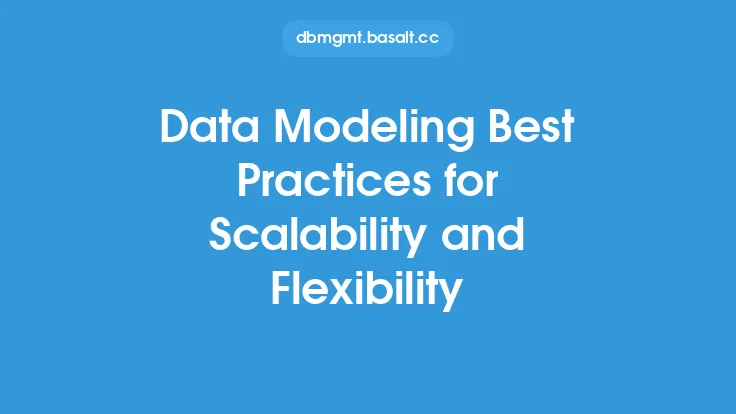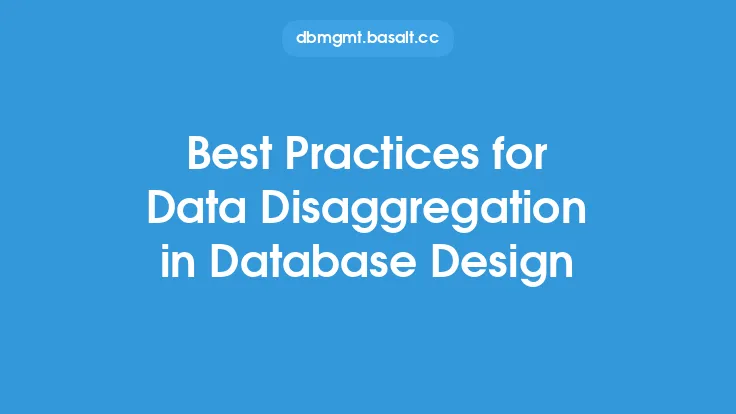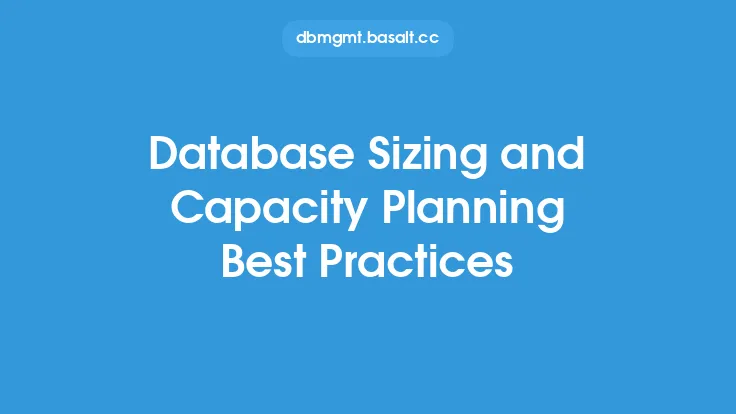When it comes to designing and implementing a database, one of the most critical steps is creating a robust and scalable database model. A well-designed database model is essential for ensuring data consistency, reducing data redundancy, and improving data integrity. In this article, we will discuss the best practices for database modeling, which will help you create a solid foundation for your database architecture.
Introduction to Database Modeling
Database modeling is the process of creating a conceptual representation of your database, including the relationships between different data entities. It involves identifying the key entities, attributes, and relationships that will be used to store and manage data in your database. A good database model should be able to capture the complexity of your data and provide a clear understanding of how the data will be organized and related.
Entity-Relationship Modeling
Entity-relationship modeling is a fundamental concept in database modeling. It involves identifying the key entities, attributes, and relationships that will be used to store and manage data in your database. An entity is a thing or concept that has independent existence, such as a customer or an order. An attribute is a characteristic or property of an entity, such as a customer's name or address. A relationship is a connection between two or more entities, such as a customer placing an order.
Data Modeling Techniques
There are several data modeling techniques that can be used to create a database model, including entity-relationship modeling, object-role modeling, and dimensional modeling. Entity-relationship modeling is the most commonly used technique, as it provides a simple and intuitive way to model complex data relationships. Object-role modeling is a more advanced technique that is used to model complex data relationships and constraints. Dimensional modeling is a technique that is used to model data for data warehousing and business intelligence applications.
Database Modeling Best Practices
There are several best practices that should be followed when creating a database model. These include:
- Keep it simple: A simple database model is easier to understand and maintain than a complex one.
- Use meaningful names: Use meaningful names for entities, attributes, and relationships to make the model easier to understand.
- Avoid data redundancy: Data redundancy occurs when the same data is stored in multiple places. This can lead to data inconsistencies and make it difficult to maintain the data.
- Use data normalization: Data normalization is the process of organizing data in a database to minimize data redundancy and improve data integrity.
- Use indexes: Indexes can improve query performance by providing a quick way to locate specific data.
- Use constraints: Constraints can be used to enforce data integrity and ensure that the data in the database is consistent.
Data Normalization
Data normalization is an essential step in database modeling. It involves organizing data in a database to minimize data redundancy and improve data integrity. There are several levels of normalization, including first normal form (1NF), second normal form (2NF), and third normal form (3NF). Each level of normalization provides a higher level of data integrity and reduces data redundancy.
Database Modeling Tools
There are several database modeling tools that can be used to create a database model, including Entity-Relationship Diagram (ERD) tools, data modeling software, and database design tools. ERD tools provide a graphical interface for creating entity-relationship diagrams. Data modeling software provides a comprehensive set of tools for creating and managing database models. Database design tools provide a set of tools for designing and implementing databases.
Reverse Engineering
Reverse engineering is the process of creating a database model from an existing database. This can be useful when you need to understand the structure of an existing database or when you need to create a new database model based on an existing database. There are several tools that can be used for reverse engineering, including database design tools and data modeling software.
Database Modeling for Different Database Types
Different database types, such as relational databases, NoSQL databases, and graph databases, require different database modeling approaches. Relational databases use entity-relationship modeling to create a database model. NoSQL databases use a variety of data modeling techniques, including key-value modeling, document modeling, and graph modeling. Graph databases use graph modeling to create a database model.
Conclusion
In conclusion, database modeling is a critical step in designing and implementing a database. A well-designed database model is essential for ensuring data consistency, reducing data redundancy, and improving data integrity. By following the best practices outlined in this article, you can create a robust and scalable database model that meets the needs of your application. Remember to keep it simple, use meaningful names, avoid data redundancy, use data normalization, use indexes, and use constraints. Additionally, consider using database modeling tools and reverse engineering techniques to create and manage your database model.





